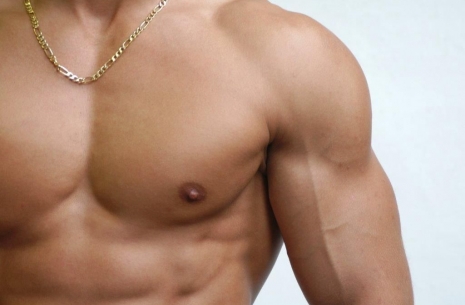
In the first part of this exercise I’ve described problems with the tendon of the long head of the bicep. Today I’ll write on diagnosis and treatment. ()
For the first part of the article, read here: http://en.armpower.net/article/en/troublesome-tendon-pt-1-3209.html
How to diagnose the ijury?
Oftentimes it starts with innocent cricks in the shoulder region, especially when rotating the arm outside and inside. Fighters complain of cricks and “clicks” in the front part of the shoulder, without pain. Now let’s correlate this with the movement of the long head of the bicep. The chance of the problem appearance is the largest with the outside rotation and arm adduction.
Pain in various places.
When strains happen in the tendon of the long bicep head – pain can appear in various places inside the body. In most cases, it appears at the front of the arm, around the middle of the shoulder muscle. This is the location of the notch between nodules, in which the tendon slides. When injury happens, the tendon moves a bit outside its location, rubbing against tight bone structures (shoulder bone nodules). Repeated movement leads to inflammation of the tendon or the small fluid sac that helps the tendon slide. Then the tendon gets enlarged, and this is where the cricks come from.
Another version of this issue is straining the above tendon, when it’s outside the notch, and tensions are located at its’ front fastening (at the above pane scapula nodule). The pain then appears in the region of the shoulder / collarbone joint and is hard to diagnose due to false clinical image. The most common diagnosis in that case is the joint itself, due to pains when moving the arm. However, in this situation a tear or strain happens in the front tendon fastening, and pain is resulting from tightly packed structures inside the shoulder. My tip – it’s worth to get a couple independent opinions. Sometimes, an improperly done USG can give a false image. Of course, you can get diagnosed with passive or functional tests, at an orthopedists or a rehabilitation specialist (patient needs full feeling, so pain killers are forbidden). The most certain method is still resonance, which a lot of people cannot afford.
Rehabilitation and treatment
What to do when injury happens? In the first, acute phase, the best rule is the RICE rule:
R-rest
I – ice
C-compression
E-elevation (of the limb, to lessen blood flow)
Cold treatments act like pain-killers, because by freezing the nerve structures around the injury, they lower the frequency of signals sent to the brain. Additionally, by freezing the tissue, they stop leakage, reduce swelling and inflammation. This applies for 72 h since the moment of trauma, apply right after pain (the size of the pain indicates the size of the ijury).
The quicker the better, remember, if you don’t apply freezing timely, the bigger the swelling, which will make warmth therapy harder.
Rules of applying local cryotherapy:
apply ice to the hurt are as soon as possible
put chipped ice in a plastic bag and tie it
put a layer of gauze on the painful place, so as not to freeze the skin
apply ice bag
tie elastic bandage around the bag, to apply slight compression
place limb on a slightly raised surface.
apply this therapy every 3 h, for 15 – 17 minutes, for maximum 72 h since the injury
don’t touch weights, don’t even do aerobic exercises during the acute phase! It’s all about lowering blood pressure in the hurt area. Cardio raises temperature and blood flow.
This is the right time to apply painkillers orally, but remember to consult a physician first. Further therapy should be planned by qualified specialists. “Letting it heal” on its own might sometimes work, and sometimes not. With the more acute injuries, therapy needs to be carefully planned:
manual therapy of tendon (pressure, mobilizations, lateral massage)
physical treatments (laser, electro therapy, phonophoresis with anti-inflammatory substance)
immobilizing or injecting around the tendon in the hurt area.
It’s also worth to remember preparations that strengthen the tissue works around joints (tendons, ligaments) and joint surfaces. Glucosamine by itself might not be enough. If the pain’s acute, it’s worth to apply MSM – anti-inflammatory and painkilling. Also anti-oxidants like vitamin C, R-ALA or ALC are necessary for regeneration of the connective tissue. Also helpful is collagen type 2. Ginger, Curcuma, and other plant extracts are very helpful too. Supplementation with OMEGA-3 is recommended.
Tomasz Kopeć MA



Archive >>>
A 1, RIGHT ARM, DAY 2, RESULTS
A 1 LEFT ARM, DAY 1 RESULTS AND SHORT VIDEO
Geoffrey R. Hale Jr „Armwrestling is my passion”
Nemiroff 2013 - E.Prudnik vs T.Bresnan - VIDEO